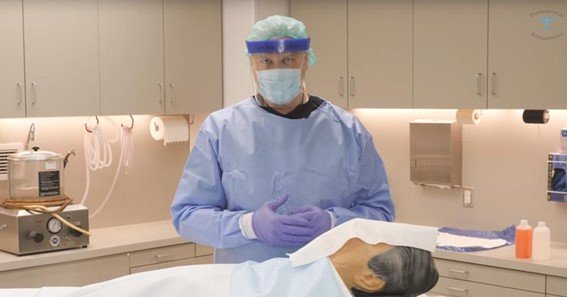What is embalming? Embalming is a process used to preserve the body after death so that it can be respectfully shown at viewings and funerals. This slows the body’s decomposition, giving the corpse a calm appearance.
The need to transfer or store objects can be long-lasting in many places. Knowing what is embalming in details might help you make intelligent choices.
What Is Embalming?
Embalming is a science and an art form that together preserves human remains. Using specific chemicals to slow or stop decomposition keeps the body looking alive. This form of body preservation allows family and friends to pay their respects at viewings, prepares the body for long-distance travel, and streamlines the funeral process.
Embalming begins with blood drainage and fluid replacement. These formaldehyde-based fluids clean and protect the body. Injecting a formaldehyde solution, a white gas, into the circulatory system is possible. This chemical fixes proteins in body cells, which makes them less likely to break down.
Understanding Embalming Purpose Methods And Environmental Considerations

Embalming requires many skills and considerations to understand its purpose and effects fully. This section covers embalming’s purpose, method, and legal implications. Knowing these facts can help you make intelligent body preservation decisions.
Embalming Purpose
Embalming aims to slow body decomposition. This makes it look more natural and peaceful, essential for memorial events and viewings. By keeping the body safe, embalming lets friends and family say their last goodbyes with respect.
Embalming Fluids
They use special fluids called embalming fluid to keep the body from going rancid. Formaldehyde, a strong disinfectant and preservative, makes up most of these fluids. The arterial system brings the solution into the body, refilling the blood and working with the tissues.
Besides formaldehyde, the solution may contain other chemicals and preservatives that help keep the body fresh and improve its look.
The Process
There are several essential steps in embalming:
- Blood Drain: A big vein is responsible for draining blood from the body of the individual.
- Embalming Fluid Injection: An injection of formaldehyde and other chemicals into the arterial system restores blood flow. This procedure is known as embalming fluid infusion.
- Cavity Treatment: Injections of chemicals into the abdomen and chest to treat cavities and protect the organs from damage.
- Alternative methods: To guarantee that all body parts are preserved appropriately, it is occasionally necessary to take further steps, such as hypodermic embalming.
The duration of the entire process might range from a few hours to several hours, depending on the state of the body and your approach.
Preservation Duration

Possibilities for preserving bodies for longer or shorter periods vary, usually between weeks and months. A body’s lifespan depends on the environment, chemicals, and embalming process. Embalming slows but doesn’t stop collapse, so the kept body will still slowly break down over time.
Law Requirements
After know about what is embalming, you must know local laws govern embalming. In some places, body transport across state or foreign borders may require embalming. Additionally, some states may have specific rules about how to handle and prepare bodies for funerals. Knowing the rules in your area is essential to following the law.
Thoughts On Health And Safety
Embalming uses chemicals that could be harmful, like formaldehyde. Handling things carefully and following safety rules is essential to protect the embalmer and the surroundings.
This means wearing safety gear, properly disposing of waste, and ensuring the embalming room has enough airflow. The embalming business has developed regulations and best practices to minimize the health risks from these chemicals to a minimum.
Religious And Cultural Views
Cultural and religious views can significantly affect how people feel about embalming. Some religions and cultures require embalming as part of the burial process, while others may not allow it because of certain traditions or personal beliefs.
For instance, Islamic and Jewish customs often favor natural ways of burying people and may not use embalming.
Embalmed Alternatives
For people who would rather not use standard embalming, there are other ways to keep bodies safe. Here, discuss what is embalming alternatives:
- Refrigeration: To slow down the decay process, it is expected to cool the body along with or instead of embalming.
- Natural Protection: Methods like cryonics and natural burial try to keep the person alive without using chemicals, emphasizing being gentle with the environment.
- Embalming in green: This method protects the body with non-toxic, biodegradable materials while causing the least damage to the earth.
Effects On The Environment
Standard embalming methods involve the use of chemicals that are hazardous to the environment. Inappropriate handling of formaldehyde and other embalming chemicals can damage both the soil and the water. At the same time, as people become more environmentally sensitive, green embalming techniques are beginning to gain popularity. Because they use natural or less hazardous components, these techniques reduce their influence on the environment.
Conclusion
Embalming is typical in the funeral industry to keep the body fresh and presentable. To allow relatives and friends to pay their respects, embalming uses special chemicals and processes to preserve the body.
Although not always necessary, embalming is essential for many cultural, legal, and personal reasons. In the above, we discuss what is embalming and more about it.
FAQ
What Is Embalming’s Purpose?
Embalming prevents decay and makes the body look more natural and respectable during memorial events and viewings.
How Are Embalming Components Used?
Embalming cleans and maintains the body with formaldehyde-based chemicals and other solutions to improve its appearance and freshness.
What Is The Rule About Embalming?
Embalming is only sometimes required by law, but moving goods across state lines, international borders, or other situations might be necessary.
Does Embalmed Body Preservation Last Forever?
No, embalmed bodies don’t stay fresh forever. Depending on how they are kept and the conditions in which they are kept, they can be kept for weeks to months.
Are There Eco-Friendly Ways To Embalm A Body Besides The Old Way?
Yes, some alternatives are better for the environment. For example, green embalming uses fewer chemicals that are bad for the environment and more eco-friendly ways to reduce the damage.
Sources:
https://www.britannica.com/topic/embalming
https://www.funeralpartners.co.uk/help-advice/arranging-a-funeral/what-is-embalming/










